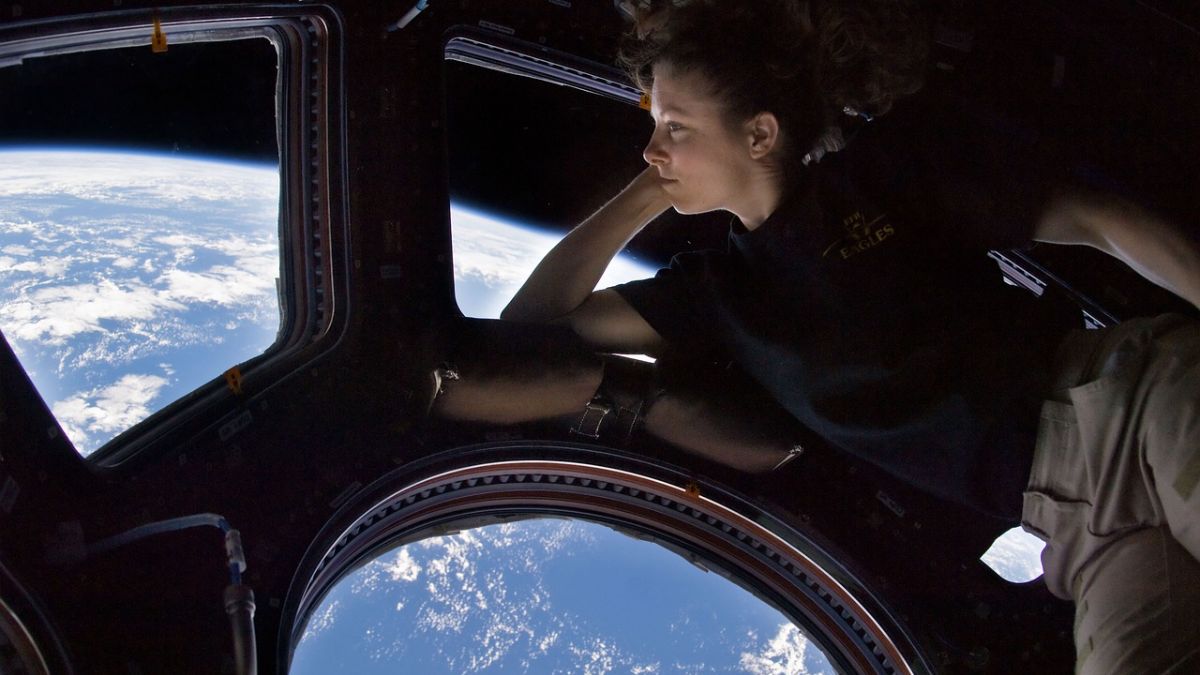Dealing with periods every month is an exhausting task. Women not only have to bear the physical discomfort that comes with their menstrual cycles but also face mood swings, depression, anxiety and irritability.
Have you wondered what happens when women get their periods in space? As more and more women voyage to space, a pertinent question arises: How do female astronauts manage their menstrual cycles?
A short history
Valentina Tereshkova, a Soviet cosmonaut, was the first woman to fly to space in 1963. Since then, more than 60 women have left the Earth’s atmosphere.
The question of how they should handle their periods in space arises on these journeys.
In fact, periods were used as an argument used to deny women from travelling to space.
In 1964, researchers from the Women in Space Program suggested that bringing “a temperamental psychophysiologic human” (i.e., a hormonal woman) together with a “complicated machine” was not a good idea, noted NPR.
There were also health questions that microgravity might enhance the risk of “retrograde menstruation” – a condition where menstrual blood flows backward into the pelvic cavity instead of out of the body.
Supporters for women in space argued that despite a lot of many unknowns, men were sent beyond Earth’s atmosphere anyway. So, why not women?
Rhea Seddon, one of the first six female astronauts at US’ National Aeronautics and Space Administration (NASA), recalled in an interview, “We said, ‘How about we just consider it a non-problem until it becomes a problem? If anybody gets sick in space you can bring us home. Then we’ll deal with it as a problem, but let’s consider it a non-problem.’ "
Impact Shorts
More ShortsNASA had not considered the requirement for tampons and sanitary napkins in space until Sally Ride became the first American woman in space in 1983.
Engineers asked her how many tampons would she need in space. “I remember the engineers trying to decide how many tampons should fly on a one-week flight; they asked, ‘Is 100 the right number?’
“No. That would not be the right number,” Ride replied.
ALSO READ: Why Sunita Williams' mission onboard the Boeing Starliner is significant
What happens if astronauts get periods in space
Well, they bleed.
Women experience periods in space the same way they do on Earth. And no, the menstrual blood does not flow backward through the fallopian tubes into the abdomen in space.
So far, astronauts have not reported any menstrual problems in microgravity.
“It [period] can happen normally in space, and if women choose to do that, they can,” Varsha Jain, gynaecologist and researcher at Kings College London, told CNN in 2016.
Woman’s choice
It is not necessary for astronauts to endure their periods. They can opt to pause their menstrual cycles during their space missions.
Some waste-disposal systems on the International Space Station (ISS) are designed to handle human blood but were not originally meant to, Jain said.
However, the practical issue of women having their periods in space is the increased weight in the form of tampons and sanitary items that need to be carried on a mission. Hygiene is another challenge.
As Jain wrote in The Conversation piece, “wash water is limited and changing sanitary products while floating in space would also be quite a task.”
If the space flyer chooses not to have her period, the best available option is the oral contraceptive pill. Jain, who wrote a paper on menstruation in spaceflight in 2016, found that the use of the “combined” contraceptive pill has become common among female astronauts to skip periods during spaceflight.
This oestrogen-based pill is popped for three weeks in a row, allowing for menstrual bleeding in the fourth week. “However, astronauts who do not want to menstruate can take these pills back-to-back and forgo that week of bleeding. For fit and healthy women, doing this is not linked to any harmful side effects,” Jain wrote in The Conversation piece.
According to the gynaecologist, a menstruating astronaut would need an estimated 1,100 pills for longer missions, like those to Mars and beyond.
This raises the issue of disposing of all the packaging and the increased cost of dispatching the extra payload into space, she wrote.
While Jain suggested the alternate option of long-acting reversible contraceptive (LARC) methods for suppressing menstruation, more research is needed to ascertain their safety and effectiveness in space.
Experts say there are benefits for women taking birth control pills in space. Both female and male astronauts experience a loss in bone density in microgravity.
“The lack of gravity means astronauts lose bone mineral density. And what we do know is that oestrogen can help with density,” Jain told CNN.
Oestrogen is the main ingredient of the birth control pill, which could work in favour of women during space missions.
According to ScienceAlert, intrauterine devices (IUDs) and subdermal implants are other methods to suppress periods that can be used by astronauts.
To bleed or not to bleed – whatever they choose, periods are not a hindrance for women to achieve their dreams.
With inputs from agencies


)

)
)
)
)
)
)
)
)



